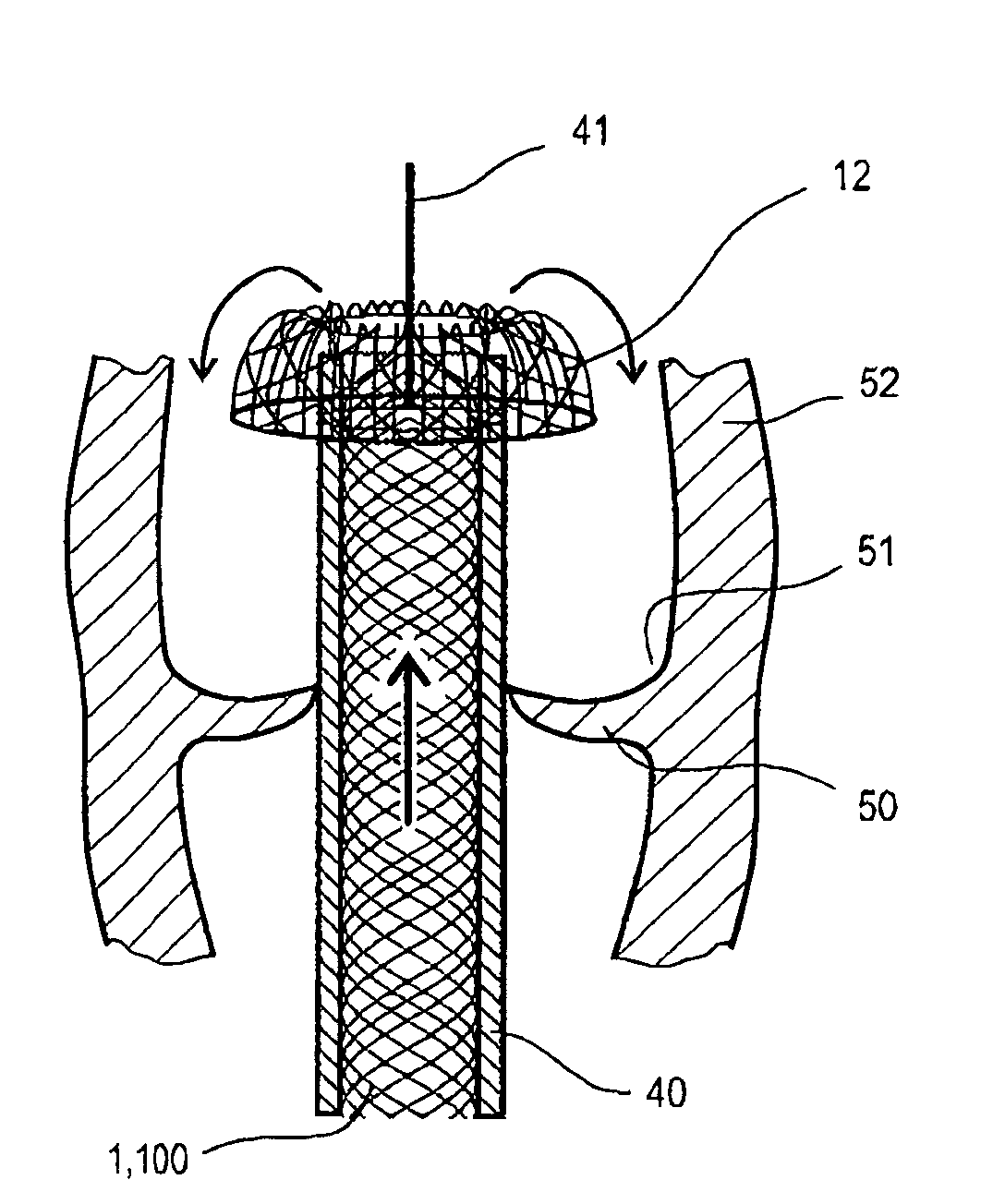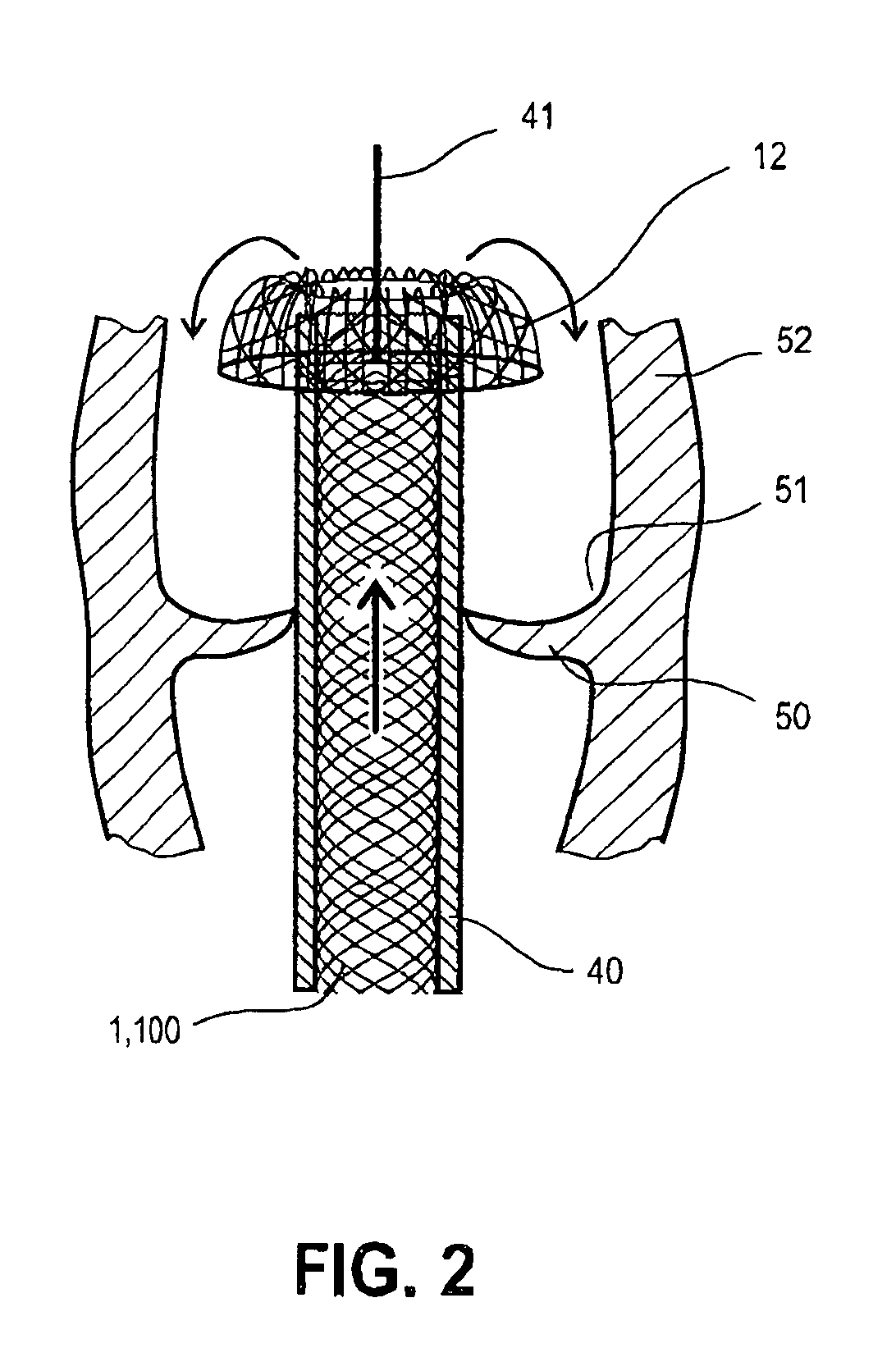Self-expandable medical instrument for treating defects in a patient's heart
a medical instrument and self-expanding technology, applied in the field of self-expandable medical instruments for treating defects in patients' hearts, can solve the problems of high risk of surgical procedures, risk of heart valve implant malalignment, and no longer justifiable risks of such surgical procedures, and achieve the effect of high memory capacity
- Summary
- Abstract
- Description
- Claims
- Application Information
AI Technical Summary
Benefits of technology
Problems solved by technology
Method used
Image
Examples
Embodiment Construction
[0041]The embodiment depicted in the figures of the inventive self-expandable medical instrument 100 for treating defects of a patient's heart relates to a self-expandable medical instrument for the transvascular implantation of a prosthetic heart valve 30, wherein the medical instrument 100 can be introduced into a patient's body in minimally-invasive fashion by means of a catheter system 40 and consists of a stent 1 made from a flexible mesh (2) of thin wires or filaments 2′.
[0042]As FIG. 1 shows, the stent 1 configured from flexible mesh 2 is in a first predefined shape during the insertion of the medical instrument 100 into the patient's body. The stent 1 further exhibits a self-expandable prosthetic heart valve 30 at its center area 15, which is covered by mesh 2 in FIG. 1 and thus not explicitly shown. As will be described below, the self-expandable prosthetic heart valve 30 unfolds by itself upon the medical instrument 100, the stent 1 respectively, being released from the ca...
PUM
 Login to View More
Login to View More Abstract
Description
Claims
Application Information
 Login to View More
Login to View More - R&D
- Intellectual Property
- Life Sciences
- Materials
- Tech Scout
- Unparalleled Data Quality
- Higher Quality Content
- 60% Fewer Hallucinations
Browse by: Latest US Patents, China's latest patents, Technical Efficacy Thesaurus, Application Domain, Technology Topic, Popular Technical Reports.
© 2025 PatSnap. All rights reserved.Legal|Privacy policy|Modern Slavery Act Transparency Statement|Sitemap|About US| Contact US: help@patsnap.com



